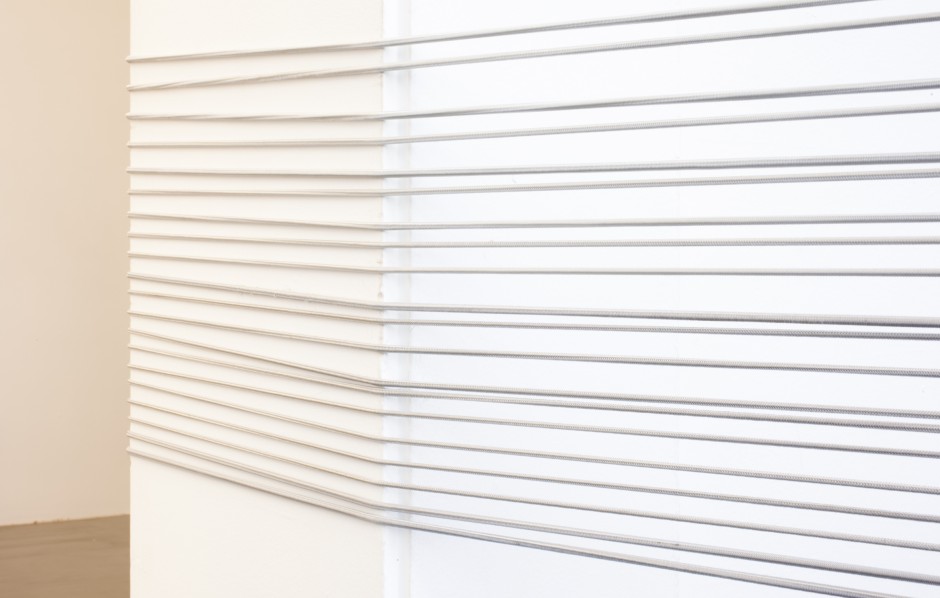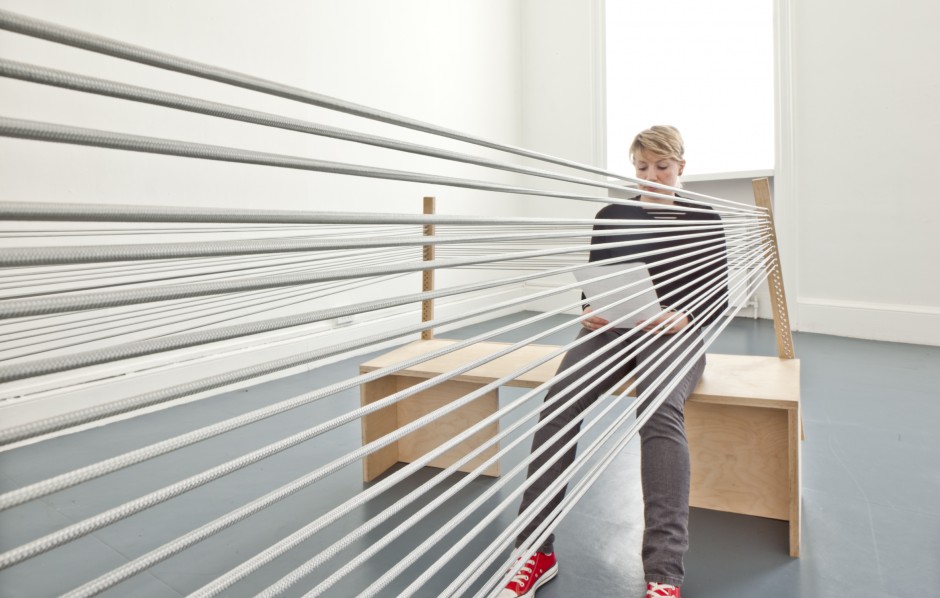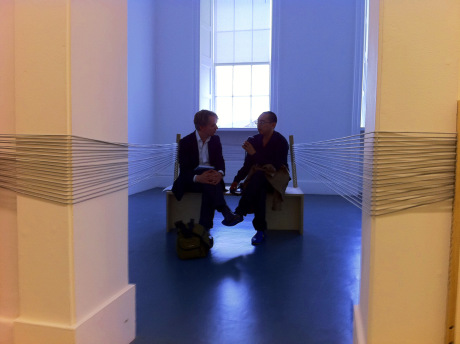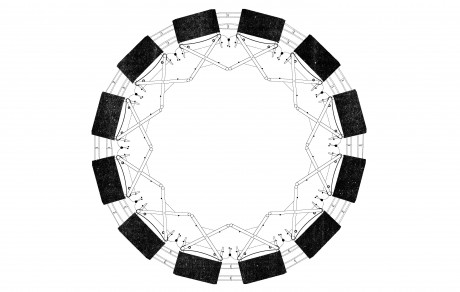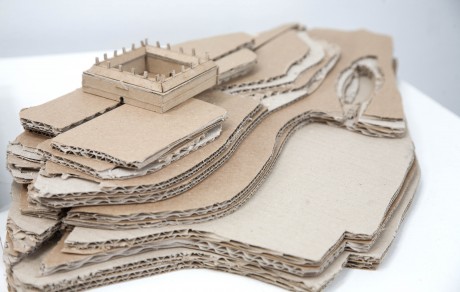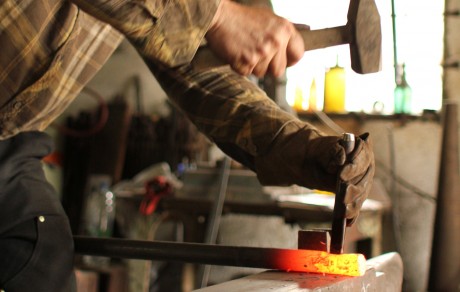Prototype seating system
Project Description
‘Polyvalency’ was a small solo exhibition in the Process Room at the Irish Museum of Modern Art (IMMA), Dublin in July 2011. The Process Room gallery offers artists on the museum’s residency programme a chance to present to work in development.
This ‘work in progress’ is part of a body of research into ideas of ‘access’ and ‘mediation’ arising from an invited three month research residency with the Education and Community Department at IMMA. Our research explored and documented ways in which the historic fabric of the museum building (a former military retirement home known as ‘The Royal Hospital’ built in the beaux arts style) and its generous grounds shaped ways in which people found their way to and through the museum and surrounds. We looked at the high boundary wall, the lapsed historic rights of way through the Royal Hospital’s grounds and the evolution of an exclusion wall around the sites graveyard (Bully’s Acre) in the time of a cholera epidemic. Our residency at the museum also coincided with two high security historic visits to Dublin. In May 2011 Queen Elizabeth of England made her first ever visit to Ireland, and shortly afterwards American president Barack Obama visited the city. As we moved between city and studio we were witnessing contemporary methods of urban crowd control as temporary railings, barriers and fencing suddenly corralled the movement of the city’s inhabitants.
A full spool of grey elastic (normally used by the museum to dissuade visitors from getting too close to artworks) is threaded through a repurposed bench (borrowed from the museums exhibition department’s stores). The resulting elasticated edge defines two distinct zones in the room, inside and outside. The exhibition title ‘Polyvalency’ was a reference to the necessity of the imperfect, what Hertzberger refers to as ‘making space and leaving space’. To the architect this can often refer to the space left for an inhabitant to ‘complete’ a building. To the artist this can be the space left for the viewers own interpretation.
Is this a generous and inviting seating area beckoning respite to the gallery visitor? Is this a threatening catapult device ready to launch an unsuspecting museum goer?
The work in this exhibition was a quick responsive gesture and draws together our observations of the contemporary art gallery experience, control and security in the wider city at this time and historic research into the high boundary wall of IMMA’s site at the Royal Hospital, Kilmainham.
Images by Henrietta Williams.

